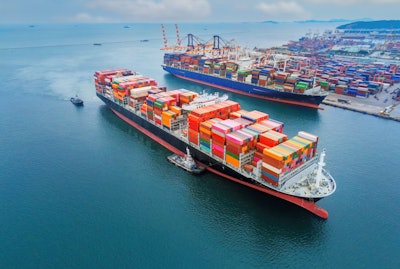
Despite the challenges that the industry faced in late 2021, when the calendar flipped to 2022, there was at least some semblance of optimism that by Q3 we would at least see a medium degree of normalcy return to the supply chain industry. However, with the outbreak of the Russia-Ukraine crisis, and the lingering effects of the COVID-19 crisis still paralyzing the supply chain industry, 2022 has turned into the lowest point that the supply chain has faced since the early days of the pandemic in 2020. And unfortunately, things will likely not improve anytime soon as one of the world’s most pivotal logistics centers, Shanghai, is stilted by new COVID-19 related restrictions.
Even before the pandemic, the supply chain and logistics industries were no stranger to fluctuations and unneeded market changes and disruptions. However, the Shanghai quarantine is posing a whole new batch of challenges that shippers and their logistics partners need to contend with as we move into the second half of the year.
With that in mind, here is how the Shanghai quarantine is uniquely impacting the logistics world and what shippers can do to weather the storm.
Quarantine timing impacts capacity and deepens shortages
Due to evolving quarantine measures, capacity moving through Shanghai was already moving at a snail’s pace. That said, trucking capacity had just hit 80 percent of pre-pandemic levels when the new quarantine measures were put in place. And although quarantine protocols are being loosened, confidence among drivers is once again being dented in terms of whether they will be able to move freely in-and-out of Shanghai. This is leading to significant backups in terms of not just moving orders out but also getting shipments of needed components into China’s manufacturing centers. Moreover, several top shippers – including Tesla, Volkswagen, L’Oreal and many others – are struggling to turn products around as they either wait for components to arrive or simply move finished products off of their loading docks. This means that key product shortages are likely going to continue worldwide at least through Q3.
U.S. West Coast congestion exacerbates shipping woes
While quarantine restrictions are being rolled back in Shanghai, and once again opening up supply chains, conditions in the U.S. also pose a significant problem and stand to complicate an already chaotic shipping landscape even further. Key ports on the West Coast continue to struggle with capacity access to trucking and rail meaning that getting goods to both short and intermediate distance locations continues to pose a significant problem for shippers. In addition, because backups have become so pronounced on the West Coast, many shippers are now trying to bypass these ports by rerouting goods to other geographic locations. Thus, freight procurement teams in the second half are likely to have their hands full as they are forced to rethink traditional routing to accommodate for the shifts that are occurring at arrivals at America’s ports nationwide.
Shippers lean into technology to adapt
One of the biggest bits of fallout on the logistics industry as a result of the supply chain pandemic was the impact that it had on technology adoption. The logistics and supply chain categories have historically been among the slowest moving industries when it comes to embracing technology. However, with the COVID-19 pandemic creating a need for greater agility and financial optimization, shippers have begun to invest significantly in technology that can help them bolster their operations and decision making. Therefore, as freight procurement becomes more uncertain as a result of the ongoing fallout from the Shanghai quarantine expect shippers to continue to double down on tools that can help them gain better visibility into their operations.
The Shanghai quarantine situation has certainly struck the global supply chain at an incredibly in opportune time. And thus, shippers need to continue to be aggressive in their innovation efforts to drive optimization and efficiency. If not, this situation could spiral into a long-term challenge that will not be resolved any time soon.







![2022 06 20 12 18 26 [digads 32976] Sdce Enveyo Entent July (2022) Jira](https://img.foodlogistics.com/files/base/acbm/scn/image/2022/06/2022_06_20_12_18_26__DIGADS_32976__SDCE___Enveyo___ENTENT___July__2022____JIRA.62b0af8bb8a18.png?auto=format%2Ccompress&fit=crop&h=167&q=70&w=250)











